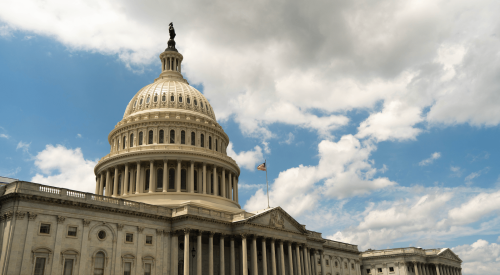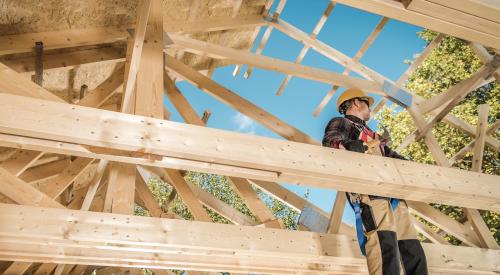As home builders and NAHB (National Association of Home Builders) members, we work every day to protect housing opportunity for all Americans. For the past two years, that has meant fighting against challenges caused by the COVID-19 pandemic, including supply chain disruptions, record-high lumber prices, labor shortages, and other headwinds undermining housing affordability.
NAHB commends the Biden administration’s recently announced plan to ease high housing costs by increasing the nation’s supply over the next five years and is pleased that the White House is bringing housing affordability to the forefront of the nation’s economic agenda. But the five-year “Housing Supply Action Plan” does little to resolve the underlying challenges constraining production of much-needed housing.
Current Factors Limiting Home Building Growth and Affordability
Ongoing supply bottlenecks, the soaring costs of goods used in home building, and a chronic skilled labor shortage all jeopardize growth for the home building industry and the nation’s overall economy. A well-functioning housing sector is key to our country’s economic health, and the administration—in concert with the residential construction industry—needs to implement creative solutions that address the housing affordability crisis head on.
While NAHB agrees with President Biden that every American should be able to afford to rent or buy a home of their own, each year it is getting harder for consumers to do just that.
Repeatedly—and doggedly—over the past two years, NAHB has urged action on this vital national concern. The latest effort included more than 10,000 NAHB members reaching out to the administration in a late April letter, warning how the growing affordability crisis has pushed the housing market to an inflection point.
And while NAHB agrees with President Biden that every American should be able to afford to rent or buy a home of their own, each year it is getting harder for consumers to do just that. The rising cost of materials including lumber, steel, aluminum, and imported products are exacerbated by the uncertainty over when supplies will be available and, when a home is completed, whether it will appraise at a price that reflects those rising costs.
Ways to Alleviate High Lumber Prices
To increase the production of much-needed housing and keep this important sector of the economy moving forward, NAHB has urged the White House to act on commonsense solutions:
- End tariffs on Canadian lumber shipments into the U.S.
- Increase the domestic supply of timber from federal lands in an environmentally responsible manner.
- Call on domestic sawmills to boost output.
These steps would help alleviate the unprecedented lumber prices seen during the past two years.
NAHB has also called on the White House to address bottlenecks at seaports that are preventing goods and materials from getting to market, and to find solutions to persistent delays in truck and rail transportation. Such efforts would help address building material prices that are up 19.2% year over year and 35.6% since the start of the pandemic.
The supply chain crisis has put the American Dream of homeownership out of reach for too many families. Builders need access to reasonably priced lumber and other materials to build homes that working families can afford to buy or rent.
RELATED
- NAHB Members Urge Action on Housing Crisis
- How Tariffs on Canadian Lumber Will Hurt U.S. Housing
- Americans Want Action on Housing Affordability
Regulation Reform: an Essential Component in Increasing Housing Affordability
The White House plan includes steps the administration can take through the federal agencies to help address and improve financing options, including making loans more widely available for multifamily development. It also calls for changes to state and local policies that prohibit building and raise the costs of producing single-family and multifamily homes.
NAHB urges the administration to reform regulations that account for nearly 24%, or an average of more than $93,800, of the final price of a new home built for sale. A recent study from NAHB shows regulation costs for multifamily development are even higher, with an average of 40.6% of total multifamily development costs now attributed to complying with regulations imposed by all levels of government. Those costs mean developers must charge higher rents for a project to remain financially feasible.
NAHB agrees with the White House that the key to resolving our nation's housing affordability challenges is to build more homes. Home builders are willing partners in these efforts. We want to make homeownership possible for more first-time, first-generation, and minority homebuyers, and to provide quality, affordable housing opportunities for those who choose to rent.
The key is to engage the power of American free enterprise. The Biden plan is a step in the right direction, but much more is needed.
W2W4
Home Innovation Research Labs
Home Innovation Research Labs helps its clients in the residential construction industry overcome barriers to innovation so they can improve the quality, durability, affordability, and environmental performance of homes and home building products. Founded in 1964, Home Innovation Research Labs is an independent subsidiary of NAHB. It originated as a small product-testing laboratory and has since grown to become a full-service market research, consulting, product testing, and accredited third-party certification agency dedicated solely to issues related to the home building industry. Home Innovation is the certifying agency for the ICC 700 National Green Building Standard, the only residential green building rating system approved by ANSI as an American National Standard.
NAHB Councils
NAHB councils serve niche groups within the home building industry and offer members professional education, recognition and awards, networking opportunities, and exclusive products and services. The councils include: 55+; Building Systems; NAHB Remodelers; Multifamily; Leading Suppliers; the National Sales and Marketing Council; Professional Women in Building; Student Chapters; and NAHB Global. Learn more about how NAHB councils can help you build your future at nahb.org/nahb-community/councils.












